Hardy Flowers shine through Sydney’s storms
The exuberance of summer continues in early autumn. Big, bold and beautiful flowers feature this month.
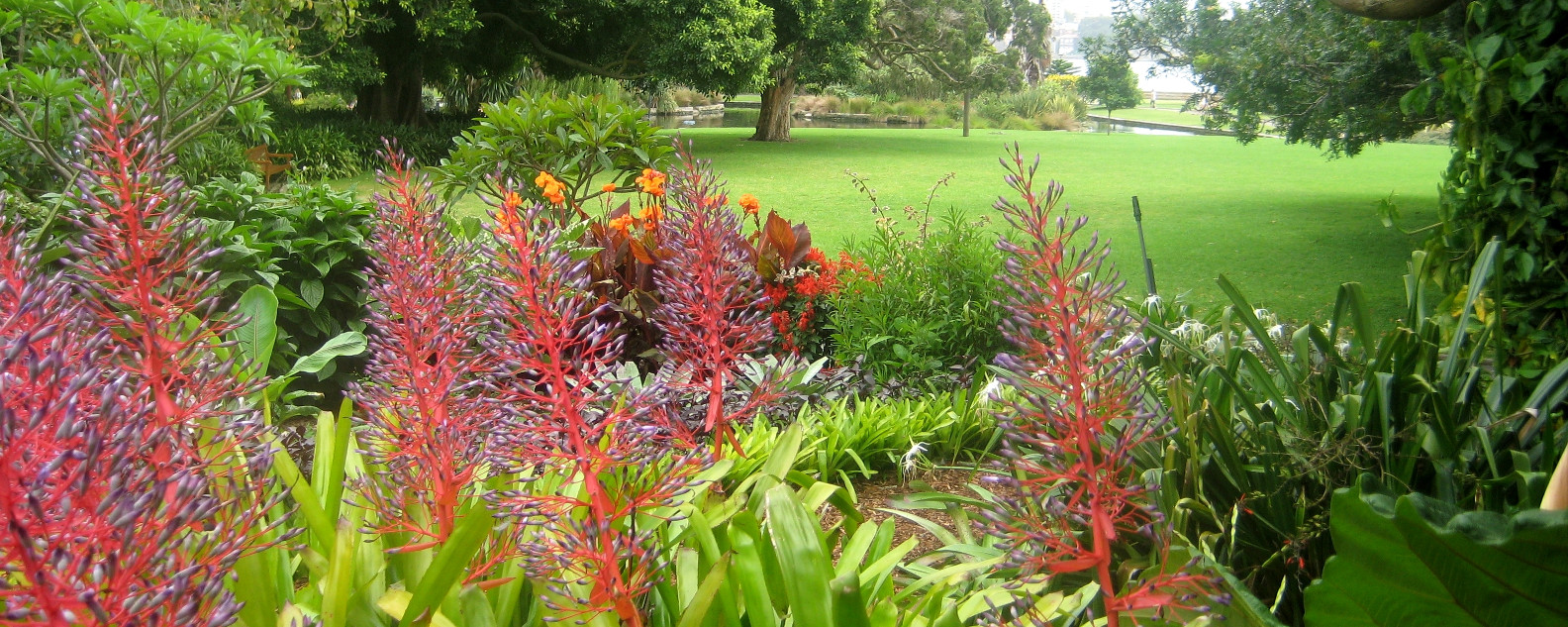
Blue Ginger – Dichorisandra thyrsiflora
This plant from eastern Brazil brings a vibrant splash of blue to the shady garden. Terminal panicles of flowers sit atop cane-like stems surrounded by spirally arranged glossy green leaves. Although its common name suggests it is a member of the Ginger family (Zingiberaceae) it is actually part of the Commelinaceae (Spiderwort) family. Like other members of the family, flowers are thought to be buzz-pollinated where vibrations created in the bee’s thorax stimulate the release of pollen.
Spiral Ginger – Costus spiralis 'Pink Indianhead'
A native to tropical South America, this plant can grow up to 2 metres tall and is distinguished from true gingers by their spiral stem. A herbaceous perennial, they grow from a rhizome with simple broad leaves. They produce a single flower spike topped with cone-shaped overlapping pink bracts. Edible flowers emerge between the bracts. A striking ornamental plant, it is used for food and in traditional medicine by indigenous people in its native habitat.
Pink or Hairy Banana – Musa velutina
This relatively small banana occurs naturally in North East India and is grown as an ornamental for its bright pink flowers and fruit. The fruit is edible but unpalatable as it contains minimal flesh and many rock-hard seeds. Wild banana species such as this one are important to maintain the diversity of bananas’ gene pool. Nearly all bananas traded internationally are a single, genetically identical variety - “Cavendish” . It is vulnerable to disease and genes from wild species may help breed disease resistance into edible bananas.
Japanese Windflower – Eriocapitella x hybrida
Walk through the Camellia beds near the Fernery and you will see these lovely flowers fluttering in the breeze. The windflower has been cultivated in China from at least the 17th century and many hybrid forms have been developed. A mainstay of the autumn garden they bring not only colour and movement but also bees and other insect pollinators in search of nectar and pollen. Previously these plants were known as Anemone x hybrida, a name still commonly used.
Mexican Sage – Salvia leucantha 'Velour Pink
This Salvia is a native to subtropical and tropical conifer forests of central and eastern Mexico. The word Salvia comes from the Latin word salveo meaning to heal, referring to the curative properties of some members of the genus. Salvia is the largest genus in the mint family (Lamiaceae) and includes Sage (Salvia officinalis). Look out for other cultivars of this species with bright purple or white flowers.
Madagascar Palm – Pachypodium lamerei
It does come from Madagascar but it is not a palm. It is a pachycaul succulent, meaning it has a thickened stem that can store water. Spines that cover the trunk capture atmospheric moisture which forms dew that drops to the ground. These adaptations allow this plant to thrive in arid environments. Stunning, fragrant white flowers form in autumn between lime green leaves. Pachypodiums belong to the Frangipani family (Apocynaceae).
Blue Cycad – Encephalartos horridus
This small cycad is endemic to the Eastern Cape Province of South Africa and is one of the most unusual and stiking of the cycads. It has a unique appearance due to its bluish foliage and stiff spiny leaves that curl at the margins. Plants are either male or female and each bear cones. Male cones produce pollen that is moved to female cones by insects. Pollinated female cones will then produce seeds. Like 88% of cycads worldwide, this species is at risk of extinction in the wild, driven by human activity including poaching.
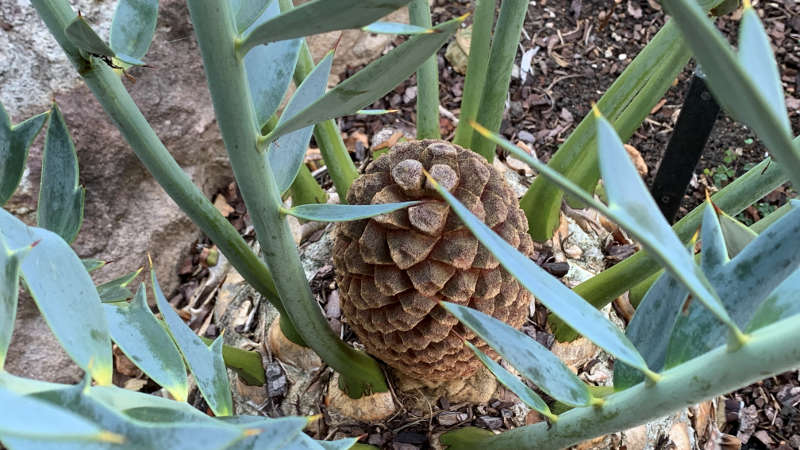
Beehive Ginger – Zingiber spectabile
This species of ginger is native to South East Asia where it has been used as a medicinal herb. Its inflorescence is a cylindrical, beehive-like spike with a rounded apex, hence the plant’s common name. The true flowers are white with dark purple markings that protrude from pouches and generally open from the bottom of the beehive inflorescence upwards. The flowers are fragile with a papery texture, and are short lived. As the inflorescence matures it changes colour from yellow through pink or orange to red.
Learn more
Why not join a Guided Walk of the Garden with one of our knowledgeable Volunteer Guides, on Friday, Saturday or Sunday. Find out more here.
If you are a journalist and have a media enquiry about this story, please click here for contact details and more information.
Related stories
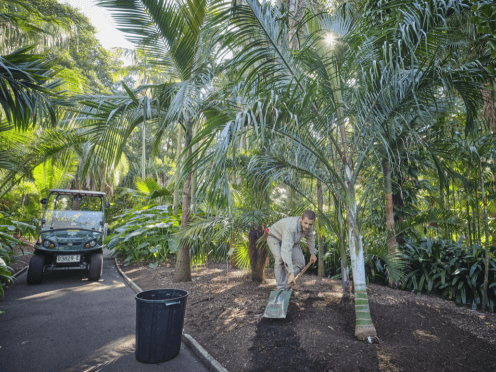
Botanic gardens across Australia and New Zealand are gearing up for Botanic Gardens Week running from 19 – 25 May.
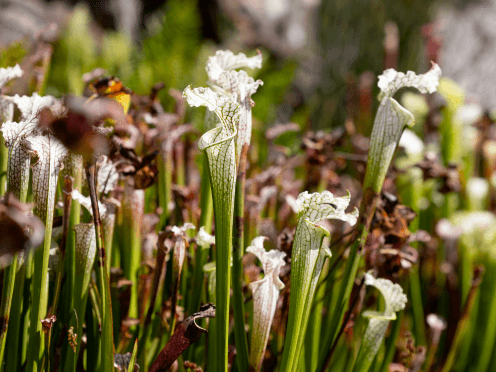
Three carnivorous plants to care for during the cooler seasons.
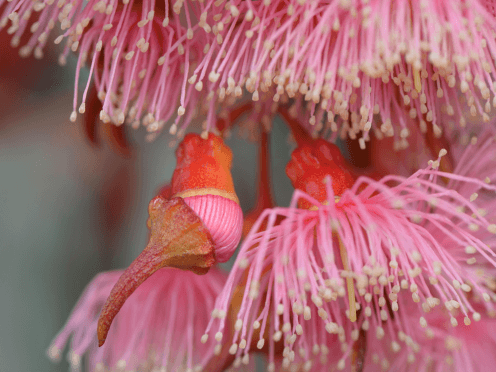
Eucalypts or gum trees are one of Australia’s most iconic plants. The scent of their oil alone evokes the bushland.